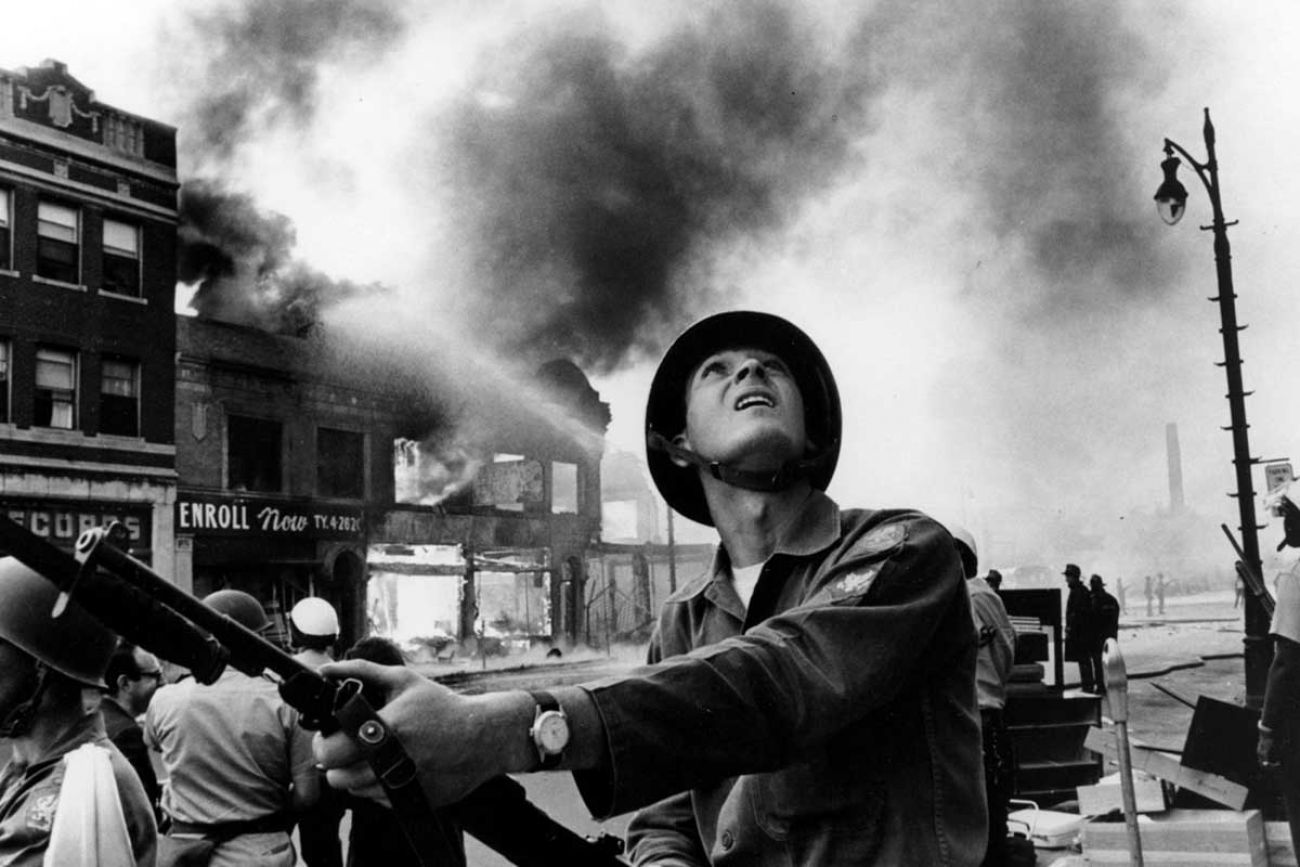New book on Detroit’s 1967 uprisings; events feel like yesterday


I know – we all know – that we are coming up on the 50th anniversary of one of the nation’s worst civil disturbances ever.
But I remember Sunday morning, July 23, 1967, as though it were yesterday. I was living in an apartment in Livonia, then headquarters of Observer Newspapers, the community newspaper company I had founded and was working hard to build.
The bedroom window faced east, and as I looked out I saw plumes of smoke rising in the distance. I had no idea what I was seeing until a friend called to say a major riot was underway.
Now recognized as one of the most significant benchmark events in Michigan history, the uprising lasted five days, led to 43 deaths and 1,189 injuries, plus around $320 million in business and property damage (calculated in today’s dollars).
After lengthy vacillation by local, state and national leaders, armed soldiers – both U.S. Army troops and Michigan National Guard -- were deployed in many areas of the city.
The uprising also accelerated "white flight" out of town and provoked a long-lasting image of Detroit as an unstable, potentially violent city. We sometimes forget that Detroit was only one-third black in 1967. It is well over 80 percent black today.
But the riot – or rebellion, as some have called it – also set in motion decades-long searing reconsiderations of long-suppressed issues of race, poverty, joblessness and despair, which have only recently resulted in hope for a wholesale turnaround for what is still Michigan's largest city.
RELATED: ‘The Intersection’ explores race, rebellion and the damage done in 1967 Detroit
At the time, I had no idea where all this might lead. All I knew was that my newspapers were typeset and printed that day at the Polish Daily News plant at Canfield and 12th Streets, right in the middle of the violence.
I knew if I had no printed newspapers ready for trucking out to the suburbs and delivery to thousands of homes, I had no advertising income. No advertising income meant economic disaster for my struggling infant company. What to do?
On Monday, with the riot at its peak, I went into the office and asked for a volunteer crew to go into the riot zone and put the paper out. Hands went up, and before we went downtown I did two things:
First, I called Lloyd’s of London and took out a $1 million life insurance policy on each volunteer. Then I cleaned the old Smith & Wesson .357 Magnum I had from back in my days as a sports editor in Fairbanks, Alaska and put it and a box of shells in my briefcase.
As we drove into the area of violence, armed police asked where in the hell we were going. We explained, and they allowed as it was our own problem. We got safely to the printing plant – and never was copy so quickly set in type, newspapers run off the press and bundled for delivery. This was long before computers, mind you.
When we got back home, we discovered the rumor mill had been cranking. A crowd of black rioters were marching out Grand River threatening to burn the suburbs down. Others were going to poison the regional water treatment system.
Both of these and many other rumors were totally false. So we worked with a few local radio stations to set up a hotline rumor control system.
And in my newspapers, we tried to help make sense to suburban readers the issues that had provoked one of America's largest civil disturbances. Those included police brutality against blacks by a nearly all-white force; high unemployment and widespread poverty; segregated and substandard housing; terrible public schools; a pervasive sense of hopelessness, powerlessness and anger.
All this came back to me recently when I read a book that vividly brought to life my memories of those days and nights of tumult and danger. “The Intersection,” a book about what Detroit has gained and lost in the half-century since the riot, has just been published by Mission Point Press; it is a project of The Center for Michigan’s Bridge Magazine and the Detroit Journalism Cooperative.
The book explores in vividly reported and beautifully written chapters the manifold aspects of the riots: The distribution of power; the workings of the Detroit police force; the nature and impact of widespread poverty; the corrosive impact of race and racism; the conundrum of persistently terrible schools; the dubious promise of justice for all; the impact of run-down, segregated housing.
And a final chapter, "The Blind Pig," details the events of the early morning hours of July 23, when a police raid on an after-hours drinking place exploded into the Detroit rebellion.
It's an excellent – and terrifying – piece of collective journalism. Interested readers can order copies HERE.
Anybody with even the slightest interest in how far we as a people and an area have come (and how far we may have yet to go) ought to find it of intense interest indeed.
See interviews with Detroit Journalism Cooperative reporters on a special episode of American Black Journal that airs Wednesday at 7:30 p.m. on Detroit Public Television.
See what new members are saying about why they donated to Bridge Michigan:
- “In order for this information to be accurate and unbiased it must be underwritten by its readers, not by special interests.” - Larry S.
- “Not many other media sources report on the topics Bridge does.” - Susan B.
- “Your journalism is outstanding and rare these days.” - Mark S.
If you want to ensure the future of nonpartisan, nonprofit Michigan journalism, please become a member today. You, too, will be asked why you donated and maybe we'll feature your quote next time!